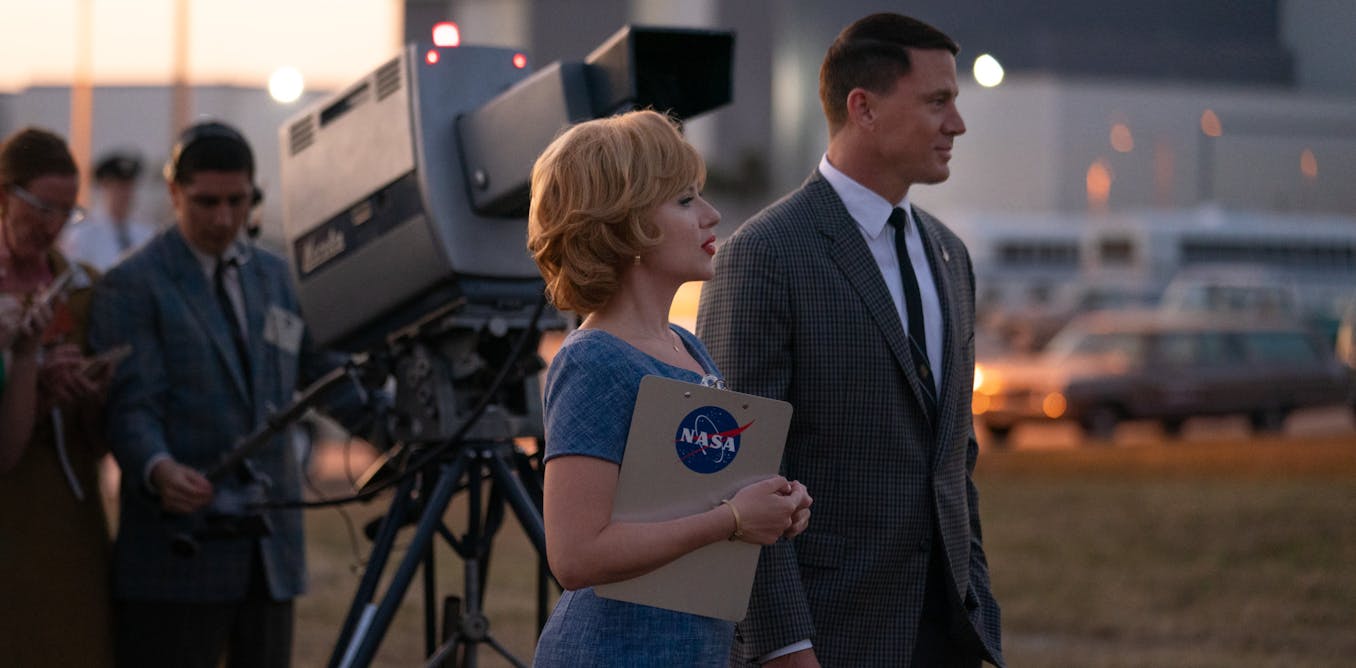People are drawn to human interest stories and negative information.

Fly Me to the Moon
The new romantic comedy Fly me to the Moon tells the story of how, in the run-up to the Apollo 11 mission, Nasa hired a high-flying marketing specialist to bolster public support. The history books tell us this isn’t quite what happened, but I believe modern science communicators could still learn from this irreverent revision of Nasa’s history.
In the opening scenes of Fly Me To The Moon, Kelly Jones (Scarlett Johansson) is recruited by shady government officials to sell one of the biggest things one can sell: the Moon. The premise may seem far-fetched. After all, who doesn’t already love the Moon? Why would we even need to sell the exciting prospect of a man landing on it? In 2024, we look back on the 1969 Moon mission with rose-tinted glasses. In reality though, throughout the 1960s, the majority of US citizens felt that the huge cost of the Apollo missions was not worth their money. “Americans are over their long and very expensive honeymoon in space,” Jones chirpily tells a sceptical Nasa employee. “I’m here to remind them why they fell in love in the first place.”
As she gets started in her mission to collect the human stories behind Apollo 11, we see Jones hit with opposition from Nasa’s workforce, concerned her attempts will undermine the science. The launch director tells her: “My guys are too weird for interviews and they’re actually really busy doing life and death work.” In the face of reluctance and hostility, she starts to make up her own stories, of engineers with rocket fuel in their blood and a childhood love of the stars, and a director with an airman father who died in the line of duty.
Science scepticism
Next year, Nasa is planning to launch its Artemis 3 lunar mission, sending humans to the Moon’s surface for the first time in nearly 50 years. But things aren’t what they were in the 60s. The further away we’ve got from seeing Neil Armstrong make one small step, the stronger public support for returning to the Moon has got. That doesn’t mean there is support for all areas of science. Down on Earth, pandemics and the existential threat of the climate crisis have highlighted the importance of how people feel and communicate about science. At times, in pockets of the USA, misinformation and science denial are winning out.
So could scientists learn something from PR and marketing professionals? Research from cognitive science shows that people remember certain stories, and pass them on more faithfully, better than others. In particular, we remember human stories with social relationships and motivations, counter-intuitive stories that surprise us, and negative stories where nothing good happens. If telling the story of Apollo 11, for example, communicators might want to highlight counter-intuitive aspects such as the fact that a modern smartphone has more than one million times the memory of the computer aboard Apollo 11. Negative aspects could be emphasized too, such as the astronauts who tragically died in the Apollo 1 tragedy, or more social angles about scientists and engineers behind the scenes.
Marketing professionals and journalists have known about and used these cognitive biases for a long time. And it seems conspiracy theorists are also taking advantage of these tricks too. I challenge you to find me a conspiracy theory that isn’t counter-intuitive, or about complex social motivations, or about bad things happening. So, if those pedaling misinformation are using these tricks from marketing, shouldn’t we use them more when communicating science too?
Professional reluctance?
How do science communicators feel about using such tricks? In my own ongoing research, funded by the British Academy, I am trying to find out. I’ve interviewed 19 science communication professionals who use storytelling in their practice, including writers, filmmakers, digital content producers, and live presenters. I asked them whether they make use of cognitive biases in their storytelling and, more interestingly, what might stop them from taking advantage of these tricks. Although the study hasn’t yet been published, the science communicators told me that they worry, at times, that introducing counter-intuitive narratives or human characters to their communication might detract from the science. This is similar to what the people at Nasa said in the movie.
This is understandable. Making information stick in an audience’s mind is an important aspect of science communication. But there are often other objectives that may be contradicted when trying to achieve this. The clearest example of this lies in the bias for negative information. Science communicators may worry that making their stories too negative could leave people disheartened, too anxious to act on things like the climate, or turn them off science altogether. However, negative emotions can actually be an important step in the emotional journey towards activism.
Other contradictions are a little more subtle. Information sticks in our brains when we understand the relationships and motivations of the people involved. But the science communicators told me they worried that this framing may contradict objectives of sending certain messages. For example, science is often a collective endeavor involving huge teams. Arguably, it is the scientific method, rather than individual researchers, that makes science successful. Science communicators often refrain from overemphasizing individual responsibility or opinion.
Another problem may be that having too many characters or counter-intuitive elements could make science communication too complex, contradicting the objective to make something highly complex easily understood. I do understand why it’s sometimes difficult to “sell” science using the same methods as in marketing. But when watching Fly me to the Moon, I wondered whether a little inspiration from the field may actually be useful when communicating science.
author Hannah Little,Lecturer in Communication and Media,University of Liverpool